
To most people around the world, the word ‘Yankee’ is used as a (sometimes derogatory) slang term for Americans in general. To most Americans, ‘Yankee’ refers to a person living in one of the six northeastern states of New England. To die-hard Red Sox fans, just hearing the phrase ‘New York Yankees’ is enough to make their blood boil. But that’s a different story…
Curiously enough, the word ‘yankee’ (ヤンキー) has also established itself within the Japanese lexicon, albeit with extremely different connotations. In Japan, a ‘yankee’ conjures up images of juvenile delinquents and biker gangs (more on that later). While this Japanese subculture may have died down considerably since its heyday in the 1980s, one museum in Hiroshima Prefecture has just opened a special exhibit titled ‘Yankee Anthropology’. This exhibit explores Yankee culture from a serious, academic perspective and includes various related realia. If you’ve always been fascinated by this aspect of Japanese subculture, now’s the perfect excuse to head over to Hiroshima!
First of all, you’re probably wondering how the heck the English word ‘yankee’ came to be associated with delinquent youth and motorcycle gangs in Japan. Our own past RocketNews24 writer Steven summed it up concisely in a 2012 article:
“The term originated in Osaka in the 1970s, referring to the young people who wandered the city streets dressed in the flashy clothes symbolic of the fashion shops of the city’s America-Mura (“America Village”) district. As the term spread across Japan, ‘Yankee’ became synonymous with ‘juvenile delinquent’ and it eventually came to describe an entire subculture as the Yankee image was popularized in magazines, television dramas, comic books and other forms of media throughout the 80s and 90s.”
The distinctive Yankee image became synonymous with anything that was generally frowned upon in the mainstream culture, including a ridiculously long pompadour-like hairstyle, baggy pants, and a uniform that was either too long or too short. Members of bosozoku, or motorcycle gangs, strengthened their intimidating image with long jackets emblazoned with gang logos, an occasional lead pipe accessory, and extravagantly decked-out motorcycles with deafening exhaust pipes.
▼Having trouble imagining the hairstyle? This should help:
▼Let’s not forget about the ladies, either!
(On a side note, be sure to check out the nameneko craze of the early 1980s, in which adorable cats were photographed in typical Yankee garb.)
Now, the Tomonotsu Museum in Fukuyama City, Hiroshima Prefecture is hosting a special exhibit dedicated to Yankee subculture between April 21 – July 21. The exhibit aims to take an in-depth look at this lifestyle which has influenced many Japanese youths over the past few decades. By doing so, its organizers hope to challenge common preconceptions and stereotypes while treating the subject through an academic lens, without any negativity.
Some of the display highlights include a miniature dekotora, or “decorated truck,” a remodeled motorcycle in the gaudy style of the bosozoku, a “golden tearoom” outfitted with hundreds of sheets of gold origami paper, works made by Mitsuo Aida (a calligrapher and poet renowned for his unique style in post-World War II Japan), examples of typical Yankee outfits, and flashy Coming of Age Ceremony kimono (similar to these!). A series of special lectures with a focus on different aspects of the subculture will also be held on predetermined dates.
This special exhibit was made possible through the collaborative efforts of several parties, including donations by former gang members themselves, collectors of bosozoku goods, and the monthly publications of Champ Road magazine and Men’s Knuckle magazine. That’s a whole lot of Yankee love!
Exhibit Information
Tomonotsu Museum
271-1 Tomochotomo, Fukuyama City, Hiroshima Prefecture 720-0201
30 minutes by bus from JR Fukuyama City Station; 5-minute walk from Tomonotsu bus stop
Hours: 10 AM – 5 PM
Closed: Mondays and Tuesdays, but the museum will remain open on April 28, 29 / May 5, 6 / June 10, 21
The museum will be closed on April 30 / May 1, 7, 8
Last day: July 21
General admission is 1000 yen (US$9.79)
[In Japanese]
鞆の津ミュージアム
〒720-0201 広島県福山市鞆町鞆 271-1
JR「福山駅」バス30分 /「鞆の浦」バス停徒歩5分
As a sneak peak, we’ll leave you with some screenshots of the exhibit from the official museum website. Enjoy!
Sources: Ameba News, Tomonotsu Museum
Images: Tomonotsu Museum, Ameblo, Tumblr

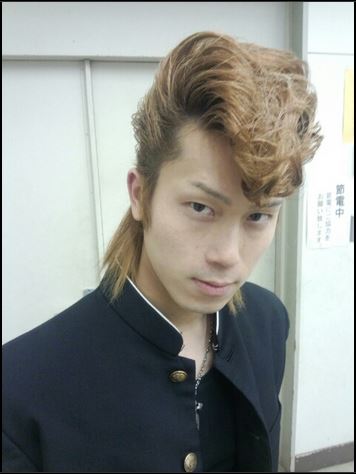
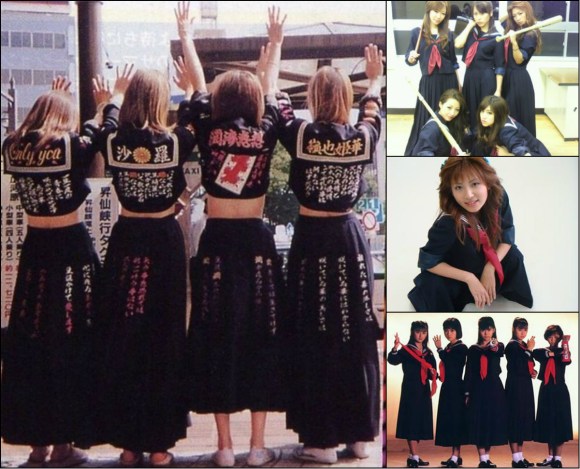
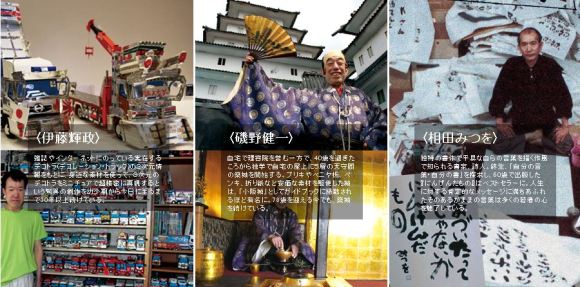
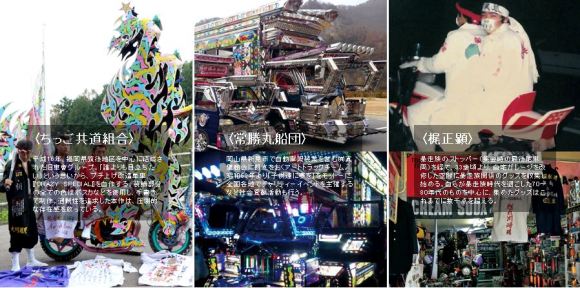
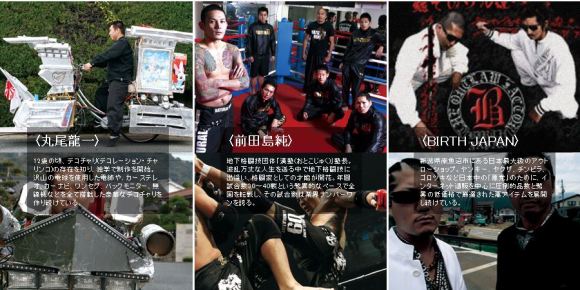
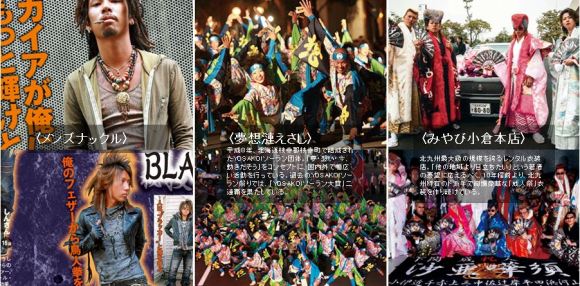
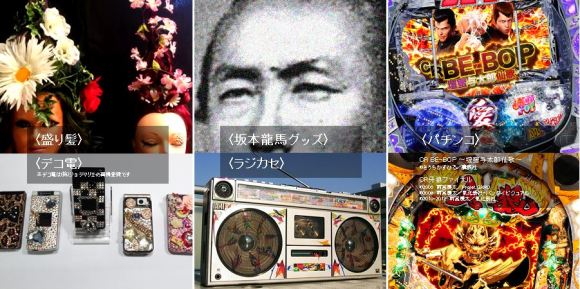
 There’s a samurai-era village for you to walk through at this awesome overlooked museum in Japan
There’s a samurai-era village for you to walk through at this awesome overlooked museum in Japan Seijinshiki 2020: Kitakyushu’s Coming of Age Ceremony dazzles in the Year of the Rat【Photos】
Seijinshiki 2020: Kitakyushu’s Coming of Age Ceremony dazzles in the Year of the Rat【Photos】 The new Simose Art Museum in Hiroshima houses a floating, futuristic surprise next to the sea
The new Simose Art Museum in Hiroshima houses a floating, futuristic surprise next to the sea Japan’s lazy, free-wheeling youth can’t even be bothered to join biker gangs anymore
Japan’s lazy, free-wheeling youth can’t even be bothered to join biker gangs anymore All-ages Catbus, real-world Spirited Away office part of new Studio Ghibli museum exhibit【Photos】
All-ages Catbus, real-world Spirited Away office part of new Studio Ghibli museum exhibit【Photos】 Foreigner’s request for help in Tokyo makes us sad for the state of society
Foreigner’s request for help in Tokyo makes us sad for the state of society Japanese city loses residents’ personal data, which was on paper being transported on a windy day
Japanese city loses residents’ personal data, which was on paper being transported on a windy day Historical figures get manga makeovers from artists of Spy x Family, My Hero Academia and more
Historical figures get manga makeovers from artists of Spy x Family, My Hero Academia and more Akihabara pop-up shop sells goods made by Japanese prison inmates
Akihabara pop-up shop sells goods made by Japanese prison inmates New private rooms on Tokaido Shinkansen change the way we travel from Tokyo to Kyoto
New private rooms on Tokaido Shinkansen change the way we travel from Tokyo to Kyoto Suntory x Super Mario collaboration creates a clever way to transform into Mario【Videos】
Suntory x Super Mario collaboration creates a clever way to transform into Mario【Videos】 Japan’s massive matcha parfait weighs 6 kilos, contains hidden surprises for anyone who eats it
Japan’s massive matcha parfait weighs 6 kilos, contains hidden surprises for anyone who eats it Anime girl English teacher Ellen-sensei becomes VTuber/VVTUber and NFT
Anime girl English teacher Ellen-sensei becomes VTuber/VVTUber and NFT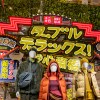 One-of-a-kind Osaka-themed Uniqlo Shinsaibashi opens
One-of-a-kind Osaka-themed Uniqlo Shinsaibashi opens Starbucks Japan adds a Motto Frappuccino to the menu for a limited time
Starbucks Japan adds a Motto Frappuccino to the menu for a limited time McDonald’s new Happy Meals offer up cute and practical Sanrio lifestyle goods
McDonald’s new Happy Meals offer up cute and practical Sanrio lifestyle goods Japanese ramen restaurants under pressure from new yen banknotes
Japanese ramen restaurants under pressure from new yen banknotes French Fries Bread in Tokyo’s Shibuya becomes a hit on social media
French Fries Bread in Tokyo’s Shibuya becomes a hit on social media Studio Ghibli releases new action figures featuring Nausicaä of the Valley of the Wind characters
Studio Ghibli releases new action figures featuring Nausicaä of the Valley of the Wind characters Red light district sushi restaurant in Tokyo shows us just how wrong we were about it
Red light district sushi restaurant in Tokyo shows us just how wrong we were about it Tokyo Tsukiji fish market site to be redeveloped with 50,000-seat stadium, hotel, shopping center
Tokyo Tsukiji fish market site to be redeveloped with 50,000-seat stadium, hotel, shopping center All-you-can-drink Starbucks and amazing views part of Tokyo’s new 170 meter-high sky lounge
All-you-can-drink Starbucks and amazing views part of Tokyo’s new 170 meter-high sky lounge Beautiful Ghibli sealing wax kits let you create accessories and elegant letter decorations【Pics】
Beautiful Ghibli sealing wax kits let you create accessories and elegant letter decorations【Pics】 Studio Ghibli releases Kiki’s Delivery Service chocolate cake pouches in Japan
Studio Ghibli releases Kiki’s Delivery Service chocolate cake pouches in Japan New definition of “Japanese whiskey” goes into effect to prevent fakes from fooling overseas buyers
New definition of “Japanese whiskey” goes into effect to prevent fakes from fooling overseas buyers Our Japanese reporter visits Costco in the U.S., finds super American and very Japanese things
Our Japanese reporter visits Costco in the U.S., finds super American and very Japanese things Studio Ghibli unveils Mother’s Day gift set that captures the love in My Neighbour Totoro
Studio Ghibli unveils Mother’s Day gift set that captures the love in My Neighbour Totoro More foreign tourists than ever before in history visited Japan last month
More foreign tourists than ever before in history visited Japan last month New Pokémon cakes let you eat your way through Pikachu and all the Eevee evolutions
New Pokémon cakes let you eat your way through Pikachu and all the Eevee evolutions Sales of Japan’s most convenient train ticket/shopping payment cards suspended indefinitely
Sales of Japan’s most convenient train ticket/shopping payment cards suspended indefinitely Sold-out Studio Ghibli desktop humidifiers are back so Totoro can help you through the dry season
Sold-out Studio Ghibli desktop humidifiers are back so Totoro can help you through the dry season Japanese government to make first change to romanization spelling rules since the 1950s
Japanese government to make first change to romanization spelling rules since the 1950s Ghibli founders Toshio Suzuki and Hayao Miyazaki contribute to Japanese whisky Totoro label design
Ghibli founders Toshio Suzuki and Hayao Miyazaki contribute to Japanese whisky Totoro label design Doraemon found buried at sea as scene from 1993 anime becomes real life【Photos】
Doraemon found buried at sea as scene from 1993 anime becomes real life【Photos】 Tokyo’s most famous Starbucks is closed
Tokyo’s most famous Starbucks is closed One Piece characters’ nationalities revealed, but fans have mixed opinions
One Piece characters’ nationalities revealed, but fans have mixed opinions We asked a Uniqlo employee what four things we should buy and their suggestions didn’t disappoint
We asked a Uniqlo employee what four things we should buy and their suggestions didn’t disappoint Princesses, fruits, and blacksmiths: Study reveals the 30 most unusual family names in Japan
Princesses, fruits, and blacksmiths: Study reveals the 30 most unusual family names in Japan Spirited Away’s No-Face, Yubaba appear in seaside park in Japan as Ghibli museum exhibit opens 【Vid】
Spirited Away’s No-Face, Yubaba appear in seaside park in Japan as Ghibli museum exhibit opens 【Vid】 Aichi Prefectural Museum of Art forced to cover up “obscene” photos following complaint
Aichi Prefectural Museum of Art forced to cover up “obscene” photos following complaint Art Aquarium Ginza offers a captivating new way to enjoy the cherry blossoms–with goldfish!
Art Aquarium Ginza offers a captivating new way to enjoy the cherry blossoms–with goldfish! Massive Ghibli Exhibition opening next in Tokyo with artwork spanning Nausicaa to The Red Turtle
Massive Ghibli Exhibition opening next in Tokyo with artwork spanning Nausicaa to The Red Turtle Even Spirited Away’s Yubaba wants you to wear a mask for coronavirus safety
Even Spirited Away’s Yubaba wants you to wear a mask for coronavirus safety New Studio Ghibli drinks pay homage to famous anime movies
New Studio Ghibli drinks pay homage to famous anime movies Hayao Miyazaki’s concept art and ideas for the Ghibli Museum to be revealed in new exhibit
Hayao Miyazaki’s concept art and ideas for the Ghibli Museum to be revealed in new exhibit Japanese museum to hold “wonder” exhibit packed with marvelous curiosities from nature
Japanese museum to hold “wonder” exhibit packed with marvelous curiosities from nature New Ghibli art exhibit lets you step into the studio’s anime posters. Sea of Corruption【Photos】
New Ghibli art exhibit lets you step into the studio’s anime posters. Sea of Corruption【Photos】 Discover your stealth skills at THE NINJA exhibit coming to Tokyo in July!
Discover your stealth skills at THE NINJA exhibit coming to Tokyo in July! Christmas light display planned near Hiroshima A-bomb Dome faces backlash
Christmas light display planned near Hiroshima A-bomb Dome faces backlash Exhibition on the 1,500 year-history of traditional Japanese women’s clothing to open in Shibuya
Exhibition on the 1,500 year-history of traditional Japanese women’s clothing to open in Shibuya New digital art exhibition in Nagoya promises “a paradise of bugs” in a colorful forest
New digital art exhibition in Nagoya promises “a paradise of bugs” in a colorful forest Real-life Rurouni Kenshin katana forged based on sword of series’ most merciless villain【Photos】
Real-life Rurouni Kenshin katana forged based on sword of series’ most merciless villain【Photos】
Leave a Reply